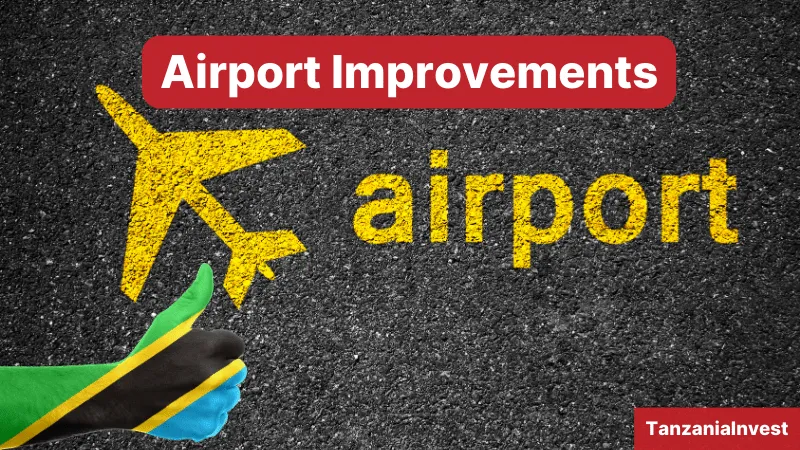
Introduction
Tanzania, with its vast airspace and numerous domestic and international airports, plays a key role in regional aviation across East Africa. As air traffic increases—driven by tourism, trade, and regional connectivity—ensuring effective air traffic management (ATM) has become a top priority. The Tanzania Civil Aviation Authority (TCAA) is responsible for overseeing air navigation services, including the modernization of communication, navigation, and surveillance infrastructure. This article explores recent improvements to Tanzania’s air traffic control systems, regional integration efforts, and the persistent challenges that affect airspace safety and efficiency.
Airspace and Operational Scope
Tanzania manages one of the largest airspace zones in East Africa, covering international airports like Julius Nyerere International Airport (JNIA), Kilimanjaro International Airport (KIA), and Abeid Amani Karume International Airport (AAKIA) in Zanzibar. In addition to managing busy commercial corridors, TCAA is tasked with coordinating military airspace, remote regions, and major wildlife conservation areas—requiring a delicate balance between civil aviation needs and environmental protection.
With the country’s growing participation in international air travel and cargo transport, especially through JNIA in Dar es Salaam, the pressure on air traffic control systems has grown considerably. In response, Tanzania has made substantial investments in updating its ATM capabilities.
Modernization of Air Traffic Control Systems

Over the past five years, the TCAA has focused on replacing outdated systems with modern, internationally compliant technology. In 2021, Tanzania began deploying a new Aeronautical Surveillance Radar System that enables real-time tracking of aircraft across most of the country’s airspace. This upgrade marked a significant shift from procedural control, which depended heavily on pilot reports, to radar-based surveillance that allows for continuous monitoring.
The country also implemented the Automatic Dependent Surveillance–Broadcast (ADS-B) system in selected regions, particularly near JNIA and KIA. ADS-B enhances situational awareness for controllers and pilots alike, providing aircraft position data based on satellite signals. This is especially useful in remote or mountainous areas where conventional radar is ineffective.
Additionally, the TCAA introduced new Voice Communication Control Systems (VCCS) and digital Aeronautical Information Services (AIS), making it easier to issue clearances, manage flight plans, and improve communication reliability between pilots and controllers.
Training and Human Resource Development
Modern systems are only as effective as the personnel who manage them. Recognizing this, the TCAA has prioritized training for air traffic controllers and engineers. Through partnerships with institutions like the East African School of Aviation and ICAO-endorsed training centers, Tanzanian ATC staff are regularly trained on new procedures, human factors in ATM, and emergency handling protocols.
In 2023, the TCAA launched an in-house simulator facility for air traffic controller training, allowing trainees to practice complex scenarios such as weather disruptions, loss of communication, and high-density traffic. The emphasis on simulation-based training is aimed at strengthening decision-making skills and reducing human error, which remains a leading cause of aviation incidents globally.
Regional Integration and Coordination
Tanzania is an active participant in the East African Community’s airspace harmonization initiatives. Through collaboration with the Civil Aviation Safety and Security Oversight Agency (CASSOA) and neighboring civil aviation authorities, Tanzania contributes to regional projects aimed at integrating ATM systems, sharing surveillance data, and standardizing procedures across borders.
A key milestone in this regard was Tanzania’s involvement in the EAC Upper Airspace Integration Project. This initiative seeks to consolidate upper airspace control in East Africa, allowing for more efficient route planning, fewer handovers between control centers, and reduced flight times.
Despite these collaborative efforts, full regional integration remains a work in progress. Differences in regulatory maturity, infrastructure levels, and cybersecurity preparedness among partner states pose coordination challenges that can affect cross-border air traffic efficiency.
Challenges in Air Traffic Management
- While progress has been made, Tanzania’s air traffic management system still faces notable constraints. One major issue is the limited radar coverage in remote and low-traffic regions. Even with recent upgrades, gaps remain in the surveillance network—especially in western and southern parts of the country—posing risks during emergencies or lost communications.
- Additionally, power reliability and backup systems at some ATC facilities are inconsistent. Several radar and communication systems rely on the national grid, and power interruptions can temporarily degrade control capabilities.
- There is also a shortage of experienced technical personnel in certain specialties, such as systems engineering and surveillance data analysis. While the TCAA has been working to bridge the gap, high turnover and limited training capacity slow the process.
- Another key challenge is data sharing and cybersecurity. As ATM becomes more digitalized, the risk of cyber threats increases. Tanzania has begun developing cybersecurity protocols for its air navigation systems, but implementation is still in early stages, with limited regional harmonization on the issue.
Impact on Safety and Efficiency
Despite these challenges, recent upgrades have had a measurable impact. Safety indicators such as loss-of-separation incidents and airspace violations have declined at major control sectors. Airlines operating within Tanzania report improved coordination, shorter arrival delays, and fewer route diversions due to navigational uncertainties.
For example, the integration of ADS-B in approach sectors at JNIA has enhanced sequencing accuracy and minimized conflicts during peak traffic periods. Similarly, improved ground-to-air communication systems have increased the reliability of information exchange, a crucial factor in avoiding misunderstandings and delays.
Conclusion
Tanzania’s commitment to strengthening air traffic management reflects its broader goal of enhancing aviation safety, efficiency, and regional integration. Through technological upgrades, personnel training, and regional cooperation, the country is steadily moving toward a more modern and resilient ATM system. However, persistent issues—such as radar blind spots, infrastructure vulnerabilities, and cybersecurity gaps—need sustained investment and policy support.
As air traffic continues to grow, particularly in response to tourism and trade, maintaining a safe and efficient airspace will require coordinated efforts at both national and regional levels. Tanzania’s progress offers a promising model, but it must be reinforced with long-term planning, inter-agency collaboration, and continued innovation.


